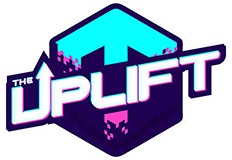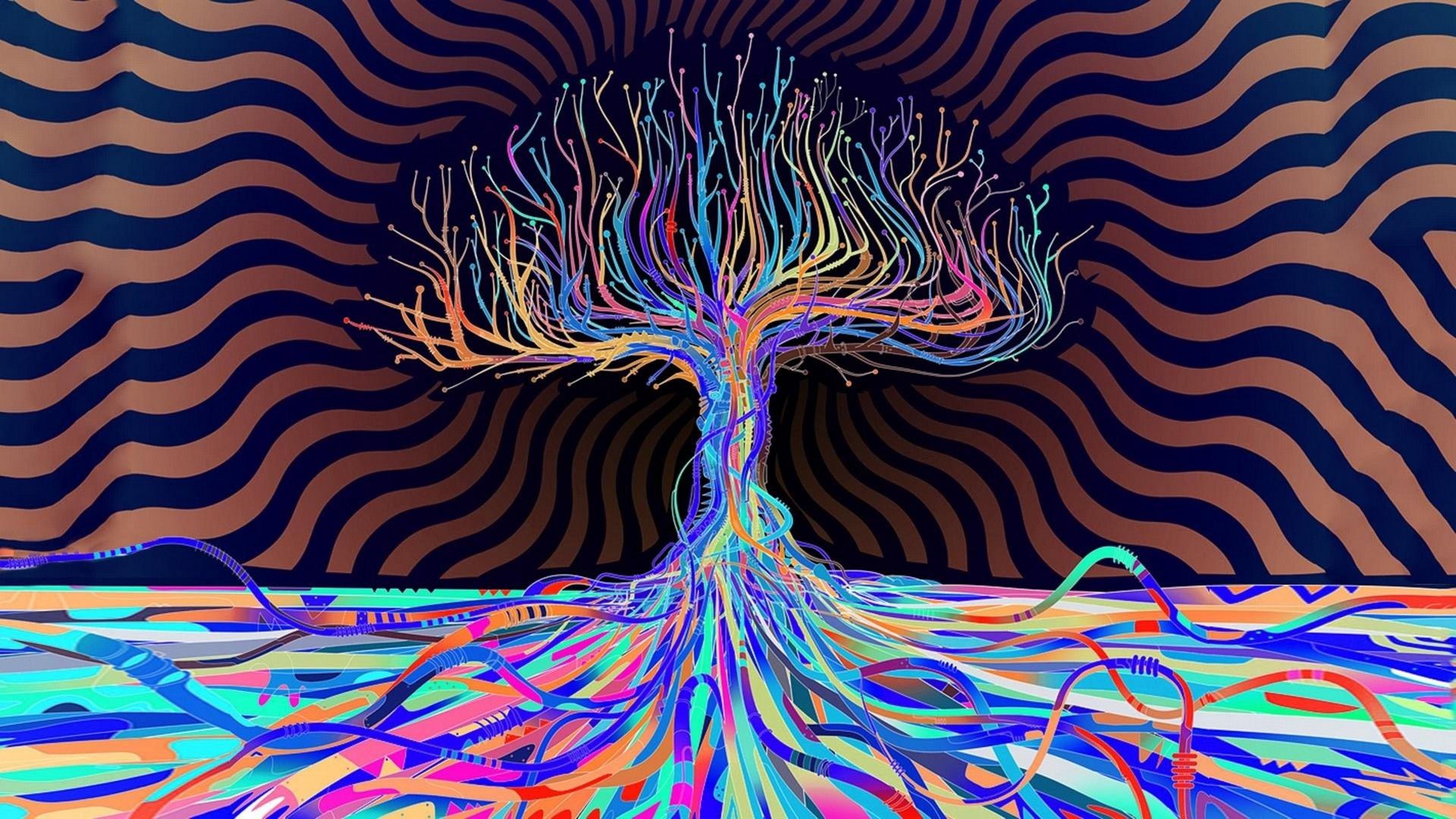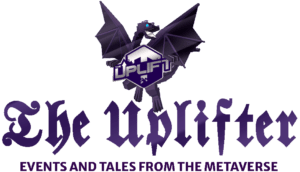Late one placid evening on the shores of some spirited temporal South American shore, Douglas J. Butner came to a revelation that would forever change the face of how we perceive the development of the Internet. For the record, almost none of that is true.. except of course the about this fascinating expose written by Douglas replicated below…
The Web 4 Manifesto: Awakening the Geotemporal Grid
About This Repo
This README features a description of the next evolution of the web, web 4. As the technologies emerge, this repo will also feature code and links to the associated technologies. For more cool Web 4 stuff, visit the Awesome Web 4 repo.
What is Web 4?
Web 4 is a set of four modular paradigms (time tokens, provable personhood, information entropy, and geo-social systems) that allow integration of provable democracy in any social system that seeks to be more collaborative (organization, government, community, etc.). Modularity allows any project to adopt one or more of these principles to increase the accuracy, fairness, and transparency of each individual’s role in collaboration.
Web 4 is built on top of web 3 (it’s blockchain-based) while being fundamentally different and providing enough benefit to society warrant the new title of web 4.
In essence, web 4 is collaboration consensus tool that helps to manifest a shared desire, opinion, or solution by providing a fair system of accounting using time-limited votes, real people, and existing geopolitical stratification.
Web 4 combines real-world components like time and geography with existing blockchain technology.
In this manifesto, I will define each of the components of web 4, provide psudeocode to illustrate the minimum integration into web 2/3, introduce the benefits to society, and offer a roadmap to adopting these concepts.
The Problem
Democracy, society’s biggest and most successful consensus and collaboration mechanism, has become too slow to keep up with the modern world. Groups of people organizing, whether to turn a profit as a company, or to live together in a city, are often under-, mis-, or not represented at all in the decision making processes that affect their lives and work. In both governments and companies it is the few that make the decisions for the many, even with the illusion of “having a say” that exists in a representative system.
The Solution
By providing each individual with equal power in a transparent decision making process, the true intent of the majority can not only be known, it can be acted upon in predetermined ways through smart contracts. Though this solution seems simple, there are issues that will need to be addressed according to the needs of each group of collaborating people, such as ensuring one person per account, and limiting the minting of voting tokens with time, as well as protecting the privacy of decision makers where appropriate. This paper will detail these solutions, and recommend that each system decide what components of web 4 to use or not use. For example, systems can (and should) be built using time tokens that do not use biometric data at all, a common concern in our modern world.
Background
Before we detail web 4, we must look briefly at the concepts of web 1, web 2, and web 3.
-
Web 1 Static web. Files are served from a remote server to a user’s browser.
-
Web 2 Dynamic web. Web pages take a user’s information and desires into account to build a unique experience for them. Asynchronous requests allow single page applications to thrive. Applications are still served from a central server.
-
Web 3 Decentralized web. Applications, often open-source, exist in distributed networks instead of a central server. This unfederated model trades control and censorship for freedom and autonomy.
-
Web 4 Time web. Time-limited tokens are given to each individual, and used as a measure of opinion or desire in collaborative systems.
Today, the top 100 websites/apps by traffic are all web 2-based. The web 2 paradigm fits closely with the wider environment of corporate-owned information.
As more and more individuals and societies are reconsidering the place of government, censorship, centralization and federated power, web 3 has emerged as a powerful, provable option to shape the evolution of information and society on planet Earth.
A growing portion of web 2 websites and applications today have elements of web 3, like cryptoblogs and games. While web 2 and web 3 can operate independently. Web 3 apps can be completely on-chain, or integrated into any web 2 website (ie. tokenization) to access web 3 features. Similarly, web 3 and web 4 can operate independently, but it makes the most sense for web 4 to be built on blockchains (web 3) to gain the benefits of reliability and transparency.
Guiding Philosophy
Web 4 seeks to implement biomimetic systems in harmony with the universe itself by replicating nature: the abundance of the Sun, rising entropy, and the equality of each human being.
Web 4 tests the hypothesis that when we create information systems in harmonic resonance with natural systems, our society will be able to advance more rapidly than ever before, as we will be able to synchronize energetically with the larger systems of bioelectromagnetic information processing around us (the Earth, Sun, and Galactic core).
Defining Web 4
Web 4 introduces four modular components for provably democratic systems, suggested to be built on top of web 3’s open-source decentralized networks.
There are four conceptual underpinnings (modules) of web 4
-
Time Tokens Individuals may claim time-limited tokens at given intervals, which represent that interval and the mintee. Only one time tokens can represent the one interval and individual, and one individual can’t hold another’s time tokens. Time tokens have functionality to the mintee only.
-
Proof of Individuality (One Person, One Account) Biometric Secrets, Social Verification, Proof of Liveness, white lists, etc. are used to guarantee no individual can collect two time tokens for a given interval by holding two accounts.
-
Information Entropy Information degradation over time, increasing cost to call smart contracts over time
-
Harmonic Geo-social Systems Equal and transparent collaboration through accounting the opinions and desires of participants in geographic bounds which may be defined by geopolitical tradition or current collectives.
Each module can be implemented separately or in tandem. This paper invites you to involve any of these ideas into your current or future projects. We will discuss these concepts one at a time, but first let’s examine why we need them in the first place.
Why we must grow from web 3 to evolve time
Provable democracy cannot be fully achieved in web 3 as-is because there is no inherit limit over how many accounts a user may control.
Democracy is essentially reaching a consensus with the idea that each person is equal in their influence on that consensus within defined bounds.
Many different consensus models have been developed in web 3, most notably, proof of work (POW), proof of stake (POS), and delegated proof of stake (DPOS). These paradigms of consensus are used primarily to determine which chain of transaction records (blocks) is considered valid, “securing” a blockchain.
POS and DPOS are additionally used in projects like Hive to allow users to “vote” on valuable content, an early example of the democratic web. DPOS is also used for networks to determine who can access network resources, such as in EOSIO blockchains.
However, both of these POS/DPOS use cases (curation and resource allocation) are not democratic in the sense that each account is not equal. In both cases, the root of democracy is in the token, not the individual, and the ownership of tokens determines the voting power or computing power held by an individual.
In the end, the only way to implement true democracy in any system is through giving each individual equal power. The only way to do this while keeping web 3’s decentralized nature is to implement the technological and idealogical advancements needed for a one individual, one account system. These advancements are, for simplicity and communication, called web 4.
Let’s review the concepts one by one.
1
Time-issued cryptocurrency (Time Tokens)
Time tokens may be offered or directly distributed to users’ wallets periodically. They work by hashing a unique personal identifier (address) with a time identifier, linking each token to a person and a span of time.
The Gears of Time Tokens
Time tokens rely on the following concepts:
-
Time Tokens Individuals may claim time-limited tokens at given intervals, which represent that interval. Only one time token can represent the one interval and individual, and one individual can’t hold another’s time tokens. These tokens provide the user with a function or action. The action burns the token, which may cause some change in the state of a system, such as minting another token, registering a vote, or any other action. Thus, each time token is unique yet semi-fungible. Time tokens can also be checked for freshness when needed, for example a user may have to use a certain time period’s token to cast a vote in an election, which SHOULD also exclude that particular time token from all other functions.
-
Time Unit A time unit is an time interval that is a sub- or superset of a timestamp. This means that a time unit is some amount (or fraction) of seconds. Each time token MUST be the only one in existence stamped with a particular time unit for each user (wallet).
-
Time Faucet A time faucet is a smart contract that offers any qualified account EXACTLY one time token per unit of time passed since their last faucet. This can be an active faucet; requiring some action by the recipient, or a passive faucet; automatically sending the cryptocurrency to the user.
-
Qualified Accounts Qualified accounts adhere to the individuality requirements of a given system. Each web 4 system will do this differently according to their needs, perhaps with a whitelist, social verification, biometric verification, proof of liveness, or other means.
How do Time Tokens work?
Time tokens operate like non-fungible tokens in their structure, storing a time unit (integer) with a unique user identifier (string) as the payload data.
The user’s identifier may also be a biocryptographic key (biokey) discussed in the next section.
Time tokens are platform independent, and need only the ability to store simple data: a time unit and user identifier.
In practice, a time unit is an integer that counts up the number of pre-defined time spans that have passed since an epoch. The epoch is typically when the system went live, and represents 0 in the first time interval.
Time Tokens in practice
If we were to create a time token for a US citizen to vote in the US presidential election, the time span would be 126144000 seconds (four years), and the epoch would be at a timestamp representing the start of the election day previous to the first election to use time tokens. On election day, an active faucet would send/offer one time token to each registered voter (aka Qualified Account) with a payload of the user’s unique identifier and the integer 1 as the time unit (the next election would be 2, and so on.) The user would then send the token to the election’s smart contract address with a memo of their vote. The system would check the identity of the voter as the one the token was minted to, validity of the memo, and the time unit against their list to ensure they are voting in the correct election, burn the token (or else reverse the transaction if malformed), and send the user back another token representing a “I Voted” sticker.
This example intentionally doesn’t account for anonymity
This example is trivial. It becomes beneficial when we realize that we can just as easily send the person 12 voting tokens so they can vote on their first, second and third choice. It becomes even more interesting when we send tokens every month (or so) and allow the people to vote directly on the bills that are being presented to their respective legislative bodies. It becomes even more expansive when we have the faucet smart contract require educational actions, such as opening a link to information on these bills (summary and the full text) to receive their time tokens.
A Simple Example in web 2
Here is the minimum information stored in a time token, using JSON Web Token (JWT) as an example
 Below is a brief pseudocode example of how one could use a signed time token as a JWT.
Below is a brief pseudocode example of how one could use a signed time token as a JWT.See Appendix A for more detailed pseudocode of a time token.
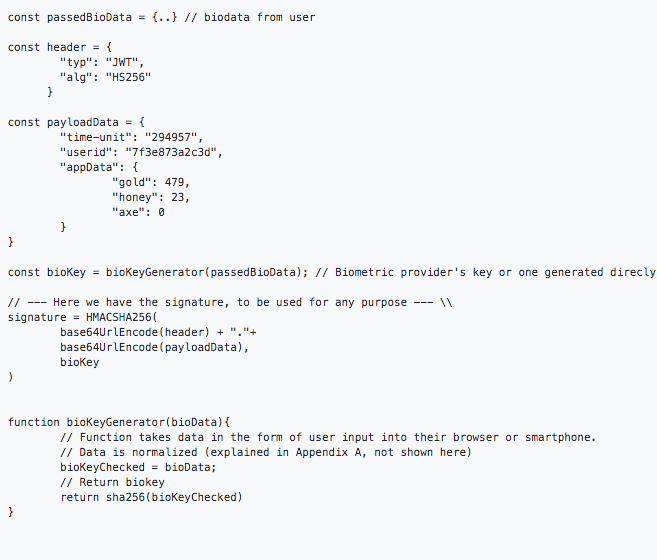
The notable parts here are the time-unit and userid in the payload, and the bioKey which is generated by a user’s biometric data.
We have said we web 4 is based on web 3 (blockchain), but this example intentionally used web 2 technology. Much of the rest of this paper goes over ways to avoid trust by incorporating biometric data in a specific way, but that’s not always needed, or helpful. We have to trust a government to run our elections. We have to trust social media platforms with our photos. We have to trust the Sun will rise, and a. giant meteor won’t crash into Earth.
The truth is, all systems have some level of trust, even if that’s just in the system itself. If we try to get rid of this trust by implementing a system so good we are our own private key, it can backfire, and when it does, if we built it because we were fearful instead of trusting, that’s super lame.
While I’m going to lay out a possible solution to use biometrics in a “trustless” way that fits with web 3 ideals, I don’t personally think it’s a good idea, and I won’t be designing my Web 4 apps with it for quite some times, if ever.
2
Proof of Individuality – Biokeys, Biosecrets, + Social Verification
Please Note: This paper originally only spoke of biokeys and has been expanded to include social verification. There are solutions available today (like FaceTec and BrightID) that solve the same issues presented here. This paper seeks to outline a web 3-based system (decentralized + open source) that can run without a centralized actor, while not providing specifics to accomplish these goals. This is more of a thought experiment than a suggestion or requirement.
Biometric secrets (biosecrets) are akin to any cryptographic private key, but they are your actual biological data, or, more specifically, a four dimensional expression of your humanness from which biometric data is collected.
Instead of a private key generated alongside a public key, a hash of quantized biometric data becomes your public key, which is paired with your actual flesh-and-blood-and-sound-and-movement-data, your private/secret key, or as we call it “biosecret” which isn’t stored on any server or blockchain.
Keys
-
Biosecret: A biosecret is a specific biometric expression that is quantized using cartesian grids into data points with a precision that makes it replicable for the individual in the future, but impossible for another person to duplicate, even an identical twin.
-
Biokey: The biometric information that makes up a biosecret is hashed into a public biokey, making the original biometrics practically impossible to reconstruct for a biokey.
How this can go wrong
In today’s biometric space, static images are most commonly used for things like fingerprint and facial recognition, and geometry is the means to compare this data. Biometric secrets generated from static images are not secure, as static images can be faked. [2] Video offers a better solution to this problem, as it is harder to fake, can include audio, and lets developers create a whole new set of algorithms based on a changing stream of data. Facetec is one company using video for biometric verification.
What could be used to generate a biokey?
This stream of data (video + audio biometric expression) could be a user doing a series of hand gestures, singing a part of a song, speaking a phrase, speaking a phrase in different voices, clapping, making a series of facial expressions or movements, or anything else one can imagine.
For security, biometric expressions (used to make a biokey) must be unique (for example, which combination of words to speak) and many types must be available (gestures, movement, singing, clapping, etc) and used in combination. If each person’s biokey was generated from the same single biometric expression, it would be a matter of time before specific AI could be developed to deepfake it for anyone. If the user is the only one that knows their biometric expressions it becomes nearly impossible to guess the type and nature of the expression, and even if that is known, difficult to use the same technique on more than one account. The nature of the uniqueness could be chosen by the user, or generated at random from the biokey software which would prompt the user to complete an action in a specific way.
Why do we need this, again?
Democratic systems certainly are being built without biometric verification, and will continue to be even after suitable biometric technology develops along the open source, client-side requirements. For now, decentralized solutions like Civic, and centralized tech like Facetec provide the necessary individuality at the cost of trust and requirement of citizenship. Additionally, biometric data can be avoided entirely by using a social verification platform like BrightID As different projects implement web 4 in their own ways, the ideas presented thus far will develop as flaws are found. And there’s always the ability to use a whitelist, the most low-tech, high-trust, and simplest solution.
Trust Issues
The biggest issue with biometrics is the lack of trust the general population has (or should have) with giving up their biometric data, including the growing number of facial recognition softwares and databases. The lack of trust is almost always associated with an individual’s lack of clear consent, and lack of understanding the technology itself.
To alleviate the trust issue, biokey generators must be:
- open-source
- entirely run on the individual’s hardware (client-side), and
- not expose any biometric data to any other users or to a web 4 system itself (the biosecret is never stored or transmitted in any way).
There will always be security concerns with biometrics. For example, if a user uses their biometric secret to unlock their mobile device, another app could be secretly recording the camera in the background. A person could record them doing their secret, and try to play that video back to the camera to gain access. Also, deepfakes exist. These concerns must be addressed before this module of web 4 reaches mass adoption.
The upside of biosecrets is they cannot be lost, and the account will always be recoverable by the individual. In a web 4 ecosystem, where the tokens are distributed daily and often spent daily, a hack would be much less catastrophic. The attacker will be able to access the user’s balance, but not alter the past transactions, nor continue to collect the future deposits, because the real user will (in theory) quickly recover the account and change the biometric secret generation means so that the hacker’s biofake is no longer working.
3
Information Entropy
Web 3 focuses on storing information forever in a provable way. Web 4 introduces a counter-model which may be optionally adopted by any time-token-based system. In this model, who did what becomes harder and harder to know the more time that passes.
This idea hinges upon incremental time units, the number of which is used to decide how difficult information about a particular individual is to access. This can be implemented by increasing the difficulty required to verify a transaction chain, or economically by increasing the fees associated with accessing or interacting with old smart contracts.
With information entropy, it is difficult, but not impossible, to piece together a story about an individual user by knowing they are responsible for a set of transactions over time. The further back in time a transaction is, the harder it is to link it to another transaction with any certainty. This difficulty may be overcame with resources or tokens required to execute a smart contract.
Information Entropy and Biosecrets
Information fidelity requirements can also be degraded over time. For example, when generating a user’s biokey, it can be assumed that the more time that passes, the more the biometrics of the individual will change.
Degradation of Biokeys
Biokeys are generated from a range of biometric values. This range of values can be expanded over time based on specific, well researched paths. The effect is, instead of having one hashed biokey for eternity, the generation process will create a set of biokeys from an increasingly wide range of data. This concept may be needed to keep people in control of their accounts as they age. There is considerable work to be done to develop this concept, as each data type has its own considerations and complications.
In this case, as time goes on, someone attempting to prove their individuality would have to spend a lot more effort to run the algorithms against their collected biodata, and the data precision needed to match the person’s identity is actually lower. This is one example of fidelity change; others can make it more expensive to change a record from the past, make it harder to find out the ID of a voter, or even limit a past state’s effect on the future of a blockchain.
Proceed with Caution
While the inclusion of this concept into web 4 may seem unnecessary at the moment, it is another guarantee of the privacy that is needed for many social applications. Philosophically, degradation of information also fits in with the general web 4 desire to reflect systems in nature.
Before moving on, I do wish to stress the modularity of web 4, and that this (perhaps the most radical idea presented) is not going to fit into every web 4 system, nor should it. This idea will find its usefulness when it is time, and should NOT be adopted without clear reasoning.
4
Geo-Social Systems: Geotribes + Geodomains
Collaborative geo-social systems are always happening everywhere humans live. Currently, we are collectively deciding what direction we should be moving as a society, from representative governments, to social media. However, human growth in the past few centuries has been focused on technological improvements rather than social improvements. [3] To harness the power of the information age for the collaboration of humans, web 4 should be used to enhance, introduce, and replace current structures that organize our societies.
Web 4 proposes that systems based in time token are the most apt to create and improve existing social layers.
What is a Geo-Social System?
A geo-social system is something that affects people (social) at a given bounded area (geo). We will introduce a model to create a bounded geo-social system on blockchain
Concepts
-
Geodomain: A bounded area that may contain or be contained by other geodomains and may have an associated group of people (geotribe).
-
Geotribe: The group of people associated with a geodomain that are participants in a web 4 system.
Geodomains are akin to a level of organization like city or state, with a finite set of smaller areas making up the larger area. Geodomains can also be overlapping if desired.
Geodomain Levels
Across the globe, one geopolitical (geodomain) pattern seems to emerge, though names vary. Communities are within Cities, are within Counties, are within States, are within Nations, are within the World.
- Community
- Cities (aka Towns, Commonwealths, etc.)
- Counties (aka Divisions
- States (aka Districts, Provinces)
- Nations (aka Countries, States, Republics, etc)
- Global
Using this existing geopolitical stratification is recommended for those wishing to build a web 4 system because it makes varying global systems easily storable in a one relational database model or similar data structure, and is understood by local people, governments, etc. Any other system is possible if one is willing to create it.
Once we have our geodomains, we must define what makes a geotribe.
Geotribal Bonds
Traditionally, it’s a presence within a certain area, such as a place of residence or business, that is of importance for things like taxes, voting, and citizenship. This is no longer needed, so we
It is important for every system that each individual declare within one geotribe so that their “vote” isn’t counted twice, or half (if divided)
When using stratified geodomains, such as geopolitically-based ones, Geodomains are layered, with each level adding definition by refining larger Geodomain layers into
If a geopolitically-based geodomain system allows geotribe members to declare their own associated location without proof, the member is incentivized to be honest, as they will receive the most benefit from having their opinion heard where it matters to them.
All “non-proof” systems should place restrictions on switching voluntarily-given geodomain association too often (such as once per 6 months) to prevent influencing foreign affairs.
High-Fidelity Democracy
By offering time tokens to the individual that correspond to each stratum we can create high-fidelity democratic systems that better represent each and every person’s desires. We can know exactly what the people want, with no guesswork and 0 middlemen, in a very short period of time.
For example, a person may be given 12 time tokens per month at each stratum to vote on the initiatives that they would like to see passed. They may vote all 12 tokens for an initiative they are most passionate about, or 1 token to 12 different initiatives (or 2 to 6 initiatives, etc). By collecting and counting these tokens, the governing body can know exactly what their constituents want, without the direct need to elect a representative who only estimates these desires.
The democratic system described in this paper does not solve all problems, as there are still issues of voter informedness, unseen actors, and more, but it is a skeleton to build a collaborative social system that are an improvement to the representative governments which were once as revolutionary as these ideas are.
Roadmap to Web 4 Reality
Phase One
Implementing time tokens
Time Tokens are implemented on any and all blockchains where developers see the value. These developers provide open-source instructions and tools to helps other developers incorporate time tokens into their applications.
Provable individuality for Time Tokens is up to each application and blockchain, and these application can choose to ignore this requirement, risking their systems’ integrity. Federated (Facetec) and decentralized (Civic) options may be used, and so can social verification (BrightID).
Information entropy and geo-social systems are starting to be theorized, but not showing up.
Phase 1 Action Points:
- Time Token ERC proposal on Ethereum (and similar for other blockchains)
- Developers exploring use cases for Time Tokens
Phase Two
dApps and discovering issues
Applications using Time Tokens are widespread, and issues in implementations are becoming known and solved. Developers who open time token faucets are seeing their token be used in third-party apps in ways they didn’t foresee.
Provable identity issues are becoming apparent, as certain applications with lax rules are being manipulated, showing the need for true provable identity. The best solutions are becoming known alongside the problems.
Information entropy principles are starting to be implemented, when required.
Geo-social systems are starting to be built, but not used for “real applications” like running a government because of lack of true provable individuality, and social inertia.
Phase 2 Action Points:
- Proposing the best uses for geo-social systems using time tokens
- Incorporating different provable identity methods
- Developers implementing Time Token in unexpected ways
Phase Three
Implementing Provable Identity
Provable Identity is now possible as suggested in this manifesto through the maturity of the biometric secrets. Standards are being created openly, or, it is decided that the way presented here is not needed as a better way is found.
Geo-social systems are being used to run and govern communities which are not dependent on traditional representative government. Existing governments are adopting time tokens to get a better read on what legislation the people want.
Organizations of all sizes are using time tokens to shift power to employees.
Phase 3 Action Points:
- Picking provable identity solutions that satisfy all requirements
- Possibly abandoning biometric system presented here
- Communities running on web 4
- Governments benefiting from web 4
- Organizations using web 4
Phase Four
Geo-social systems
Information entropy is added to the systems where it can be of use. For example, this could make a person’s (anonymous) voting record less knowable over time by increasing the amount of CPU time needed to associate one vote with another.
Geo-social systems are being used as a replacement for representative government where it is the will of the people. Voter informedness is measured and known, as are the exact desires of the people. This creates collaboration and a renewed faith in democracy, and a feeling of belongingness and appreciation for each individual.
Phase 4 Action Points:
- Building and operating geo-social systems for the benefit of society and any collaborating group
- Exploring use cases and integrating information entropy where appropriate
Author notes
Change Without Conflict
No one can stop us from building collaborative systems with web 4 and even self-governing. We don’t need to “tear down the system” or separate from society to do so. Web 4 can exist fully embedded in the geopolitical systems around us, while implementing and improving the four concepts, the underpinnings of collaborative democracy.
If and when the “old system” meets its demise, as all things do, we can transition rapidly to a web 4 system like Effective Collective or any other, as this solution will already be in place.
Why use the term “Web 4”
It is my belief that each version of the web must 1) be built on top of the previous version, 2) be fundamentally different than the previous version by introducing new technology, and 3) have meaningful impact on society.
This proposal for the next iteration of the web is an effort to both expand and shift the path of information science in a direction where the meaningful impact of society involves: 1) empowerment of each individual, which serve as the basis for collective (social), economic, and novel applications; 2) provable identity verification while maintaining complete separation from any federated system, including government, with the side-benefit of lifelong recoverability of biokeys with biosecrets; and 3) resonance with our contained and containing systems, like our human organs and the Solar system, which provide us with life and free energy daily, akin to free time tokens.
While an argument could easily be made that DeFi is Web 4, or another emerging tech, like “layer 2” blockchains (rollups) are web 4, both of these are not new. DeFi mimics and improves the systems of the past. Rollups are merely making web 3 more efficient.
It is my hope and desire that the information presented here will be expanded on and implemented by many developers and systems in the coming years, not for the benefit of the few, but for the empowerment of each individual and the harmony of the human collective, and every layer of Gaia.
Notes + References
[1] – Solutions like Civic and Facetec have proved to be effective in verifying individuality. KYC services rely on government-issued identification, physical signature, and minimal, often human-checked bioverification. Until the technology is developed for a biometric system resembling the ideas here, these options (as well as social verification) are viable, though not fully embodying the idea of web 4.
[2] – Hao, K. & O’Neill P. (2020, August 06). The hack that could make face recognition think someone else is you. Originally Published at https://www.technologyreview.com/2020/08/05/1006008/ai-face-recognition-hack-misidentifies-person/
[3] – Nishimura H., Kanoshima E., Kono K. (2019) Advancement in Science and Technology and Human Societies. In: Abe S., Ozawa M., Kawata Y. (eds) Science of Societal Safety. Trust (Interdisciplinary Perspectives), vol 2. Springer, Singapore. https://doi.org/10.1007/978-981-13-2775-9_2 (Specifically section 2.1.3) web link
Appendices
Appendix A: Pseudocode Example of Biometric Function
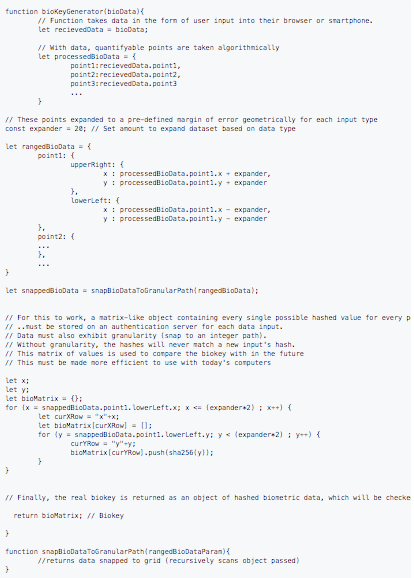
*****
Disclaimer: The previous manifesto has been reproduced for educational purposes here on wherewehideallthealpha.com with permissions given by the author, Douglas Butner. To interact directly with the ideas in this manefesto regarding Web 4 concepts surrounding the upcoming evolution of the Internet, please redirect to the official Github repo at https://github.com/dougbutner/web-4
Who is Douglas James Butner?
On a mission to create tools to harmonize Individuals, the Human Collective, and Gaia, Douglas J. Butner is the creator and currently working on building cXc.world, Aquarius.Academy and side projects tomoonfor.earth, digdoug.rocks, and perma.rocks.

🌞 I’m looking to collaborate on: Effective Collective and Web 4
✋ Grow with us, take a role in cXc. Ask how in t.me/cXc_world
💬 Let’s chat me about: Web 4, Geotemporal Systems, Collective Participation Income (CPI), Time Tokens, channeling.
✈️ Drop a line: TG @godsolislove
🌎 Fun fact: I have been a Digital Nomad for nearly 4 years!! Living mostly in Latin America.
